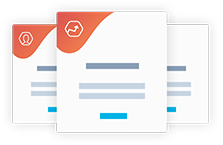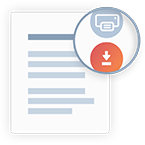


When your company is up and running, it’s vital to assess its performance. The best way to do so is to create a balance sheet of your assets and liabilities to see your equity. In accounting terms, equity represents the owners’ interest in a company after subtracting all liabilities.
That’s why business owners create balance sheets to inspect the company’s financial status at any given moment, though most often done at the end of a fiscal year or quarter. With a balance sheet, you’ll be able to track your business’ performance throughout the year.
A balance sheet is an accounting document and one of five significant financial statements that companies use to assess financial performance. It shows the company’s financial position on a specific date.
There is a reason company accountants generate balance sheets regularly. It’s to track the state of the company across multiple touchpoints. You might want to create a balance sheet at the end of each month, but you can also generate one at the end of a quarter or year.
A balance sheet consists of three major components: Assets, Liabilities, and Equity.
Assets represent everything valuable your company owns. This can include real estate, cash, inventory, equipment, and other components. You can break down your assets even further into current and non-current assets, which are the assets expected to be used or sold in the next 12 months, like cash and inventory, and the long-term investments such as vehicles, buildings, and company equipment.
Liabilities are all of the company’s outflow and debts. Like assets, liabilities can also be classified as current and non-current. Current liabilities include purchases, bills to pay, short-term loans, and more. Non-current liabilities are long-term debts like mortgages and multiyear loans.
Knowing the assets and liabilities, you can calculate the equity, which is the difference between the company’s assets and liabilities. For your personal situation, you want to consider any assets you as the owner contributed (capital) to the company. Also, there are profits that you reinvest into the company and profits that serve as emergency funds.
Depending on the financial jargon, a balance sheet may also be known as a Statement of Financial Position.
Whether you’re the owner of a small business or a large corporation, you’ll need to generate balance sheets in regular order. This is so both you and the shareholders will be able to look at the balance sheet and assess the company’s financial standing.
Of course, public companies are required by law to make balance sheets and other financial statements available. As for your company, 360 Legal Forms can automate the creation of balance sheets for you.
A company’s balance sheet has other uses too. For example, bankers may use balance sheets to assess a company’s creditworthiness.
Create your own documents by answering our easy-to-understand questionnaires to get exactly what you need out of your Balance Sheet.
Each document on 360 Legal Forms is customized for your state.
All you have to do is fill out a simple questionnaire, print, and sign. No printer? No worries. You and other parties can even sign online.
Get your financial data ready and let 360 Legal Forms help you out, capitalizing on our extensive library of attorney-vetted legal forms. The process is fast and easy. All you have to do is fill out our easy-to-understand questionnaire. Once complete, simply download your form as a PDF or Word document from your secure online account.
To create your document, please provide:
Business Name: The official legal name of your business.
Entity Type: Choose whether it is an LLC, sole proprietorship, partnership, LLP, non-profit corporation, for-profit corporation, S-corp, or something else entirely.
Date of the Balance Sheet: The format is mm/dd/year.
Current Assets: Enter the values of your existing assets under categories such as cash on hand, inventory value, or accounts receivable.
Fixed Assets: Enter the importance of fixed assets such as land value, real estate value, or company vehicles.
Current Liabilities: Enter the amounts for accounts payable owned, taxes, notes, or accrued expenses.
Long Term Liabilities: Enter the amounts for mortgages, long term loans, and anything similar.
Assets: Everything that a company owns and uses to generate revenue
Liabilities: All the obligations that a company owes to other parties
Equity: The difference between a company’s assets and liabilities, i.e., the book value of a company
Balance sheets do not require any signatures as they are not legal documents. In the unlikely event that a court or lender asks for signed or notarized balanced sheets, that is exactly what you should provide.
When you enter all the required details to generate a balance sheet on 360 Legal Forms, make sure to download it in a PDF format. After that, you can either print it out or email it to any concerned parties.
Balance sheets are not legally required unless you own a public corporation, where all are required by federal law to issue three financial statements, one of which is the balance sheet.
Business owners usually generate balance sheets throughout the year. This can be at the end of every month, quarter, or year. For new business, You may want to print them out each month as they provide clear insight into your company’s performance. This can allow for course-correction if you do not like what you see on paper.
Since balance sheets do not require a signature, it is not necessary to involve a notary public.
Our exhaustive library of documents covers your personal, business, and real estate needs with all of your DIY legal forms.
Create professional documents for thousands of purposes.
Make unlimited documents and revisions. Sign online in seconds.
Our documents are vetted by lawyers and are applicable to all 50 states.